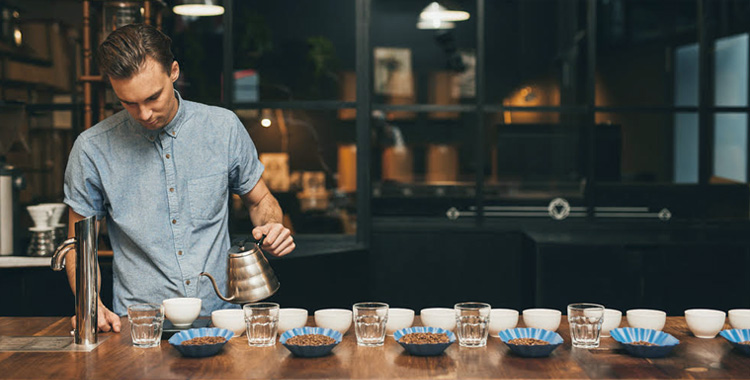Cupping requires a fair amount of training and experience for the brain to master the coordination of the signals from the eyes, nose and tongue. Coffee tasting, called “cupping,” is the art of exploring the aroma, flavor, mouth feel and overall quality of a coffee. Cupping coffee is a frequent ritual at The Roaster. It helps us maintain consistency among our award-winning lineup of coffees, gives us an opportunity to sample potential new blends, and keeps us energized, excited and fully engaged with our products.
Cupping is a fairly regimented and structured process, practiced in an identical manner by professional cuppers across the world. It's similar to a sommelier discerning the components of a fine wine; however, cupping depends upon many controlled variables built into the process.






